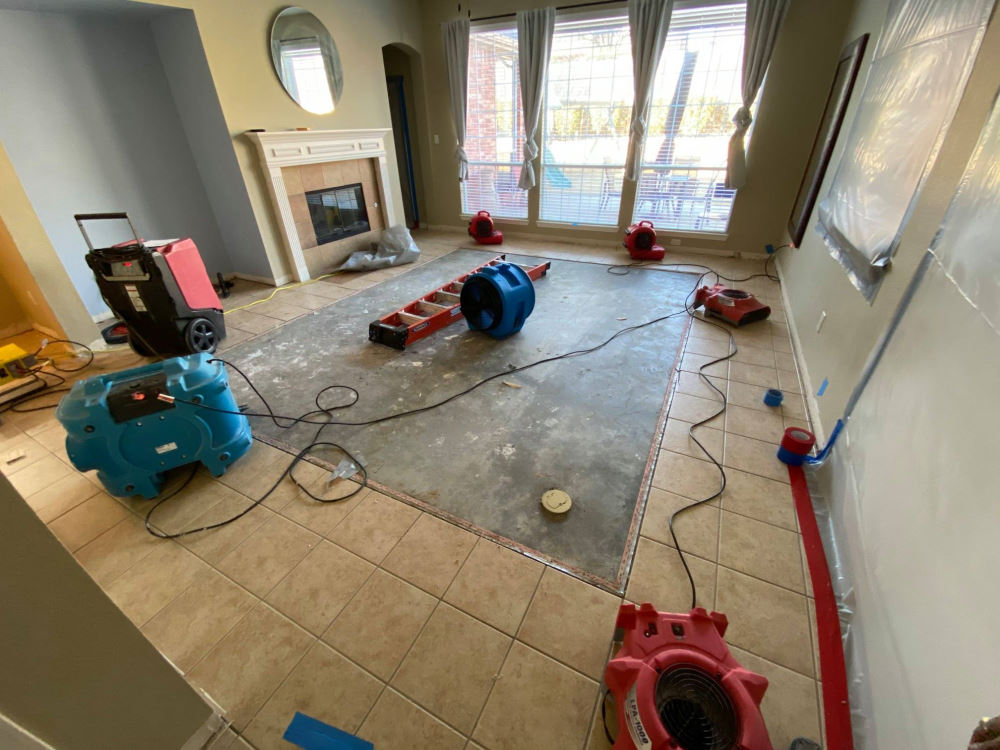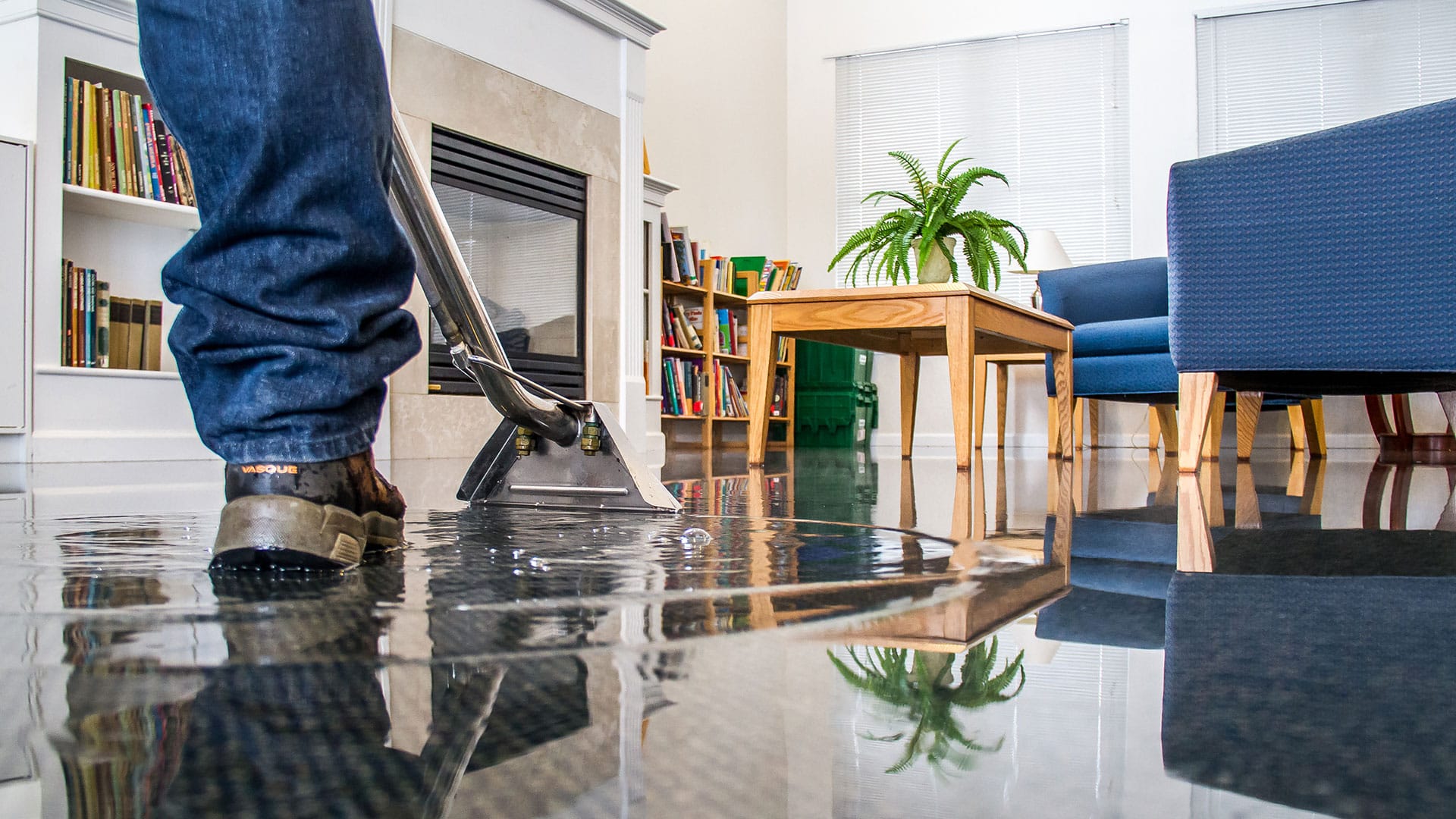The Refine of Water Damage Cleaning: Ensuring Your Home Is Restored Successfully
Water damage can be an overwhelming obstacle for property owners, demanding a meticulous and organized cleanup process to bring back security and functionality. damage restoration services. Following this, effective water extraction methods play an essential function in reducing further damage.
Analyzing the Damages
Upon finding water damage, the initial step is to thoroughly assess the extent of the influence. This preliminary examination is critical, as it aids figure out the needed steps for efficient clean-up and restoration. Begin by inspecting the influenced areas, consisting of walls, ceilings, floors, and individual possessions, to identify the resource of the water invasion, whether from flooding, leaks, or condensation.
Recording the damages is essential for both insurance cases and preparing remediation efforts - damage restoration services. Use photographs and composed notes to capture the extent of the damages, keeping in mind any damaged structural components and products. Pay special focus to locations that might not be promptly visible, such as behind walls and under rugs, as hidden wetness can cause additional complications, consisting of mold development
In addition, evaluate the timeline of the water direct exposure. The longer the materials continue to be wet, the greater the possibility for damage. Comprehending the duration of exposure will notify the necessity of remediation efforts. Ultimately, a thorough evaluation prepares for a successful water damage cleaning process, making certain that all affected areas are resolved successfully and thoroughly.
Water Extraction Techniques

Professionals commonly employ submersible pumps for larger quantities of water, which can quickly relieve flooding in basements or various other influenced locations. For smaller sized amounts, wet/dry vacuum cleaners are often used to extract recurring dampness from carpetings and tough surface areas. In addition, utilizing portable extractors enables targeted removal in restricted spaces or locations with fragile products.
In circumstances of infected water, such as sewage or floodwater, advanced removal strategies may involve using biohazard devices to make sure security and conformity with wellness guidelines. High-powered removal devices are vital in lessening water retention in architectural products, which can result in mold growth and architectural degeneration if not addressed without delay.
Eventually, the efficiency of water removal strategies plays a crucial duty in the total success of the water damage cleaning process, laying the groundwork for succeeding remediation efforts.
Drying and Dehumidification
When standing water has been effectively removed, the following crucial stage in the water damage cleanup procedure is drying and dehumidification. This action is necessary to prevent additional damages and mold development, which can take place within 24 to two days in wet atmospheres.
To achieve efficient drying out, specialized tools such as industrial-grade air movers and dehumidifiers is used. Air movers distribute air throughout wet surface areas, enhancing dissipation prices, while dehumidifiers reduce humidity degrees in the air, promoting a favorable setting for drying out. The combination of these tools makes certain that moisture is attracted out from floorings, furnishings, and walls, permitting them to completely dry thoroughly.
It is very important to keep track of the drying process carefully. Specialists frequently make use of wetness meters to analyze the moisture material in numerous products, guaranteeing that all impacted areas get to appropriate dry skin degrees. This thorough approach assists to prevent hidden moisture pockets that could result in architectural damages or harmful mold and mildew development.

Cleaning and Sanitizing
After the drying and dehumidification stage is full, the following crucial action in water damages clean-up is cleaning and disinfecting the influenced locations. This procedure is critical to avoid the development of mold, bacteria, and other pathogens that grow in moist environments.
The cleansing stage commonly includes removing any kind of debris, dirt, and contaminants from surface areas utilizing specialized cleaning representatives. For difficult surface areas, a combination of soap and water or commercial cleansing products is usually employed. Soft materials, such as furniture and carpets, might require extra comprehensive cleaning approaches, including vapor cleaning or deep removal strategies, to guarantee comprehensive cleanliness.

Disinfecting complies with cleaning, using EPA-approved anti-bacterials to eliminate damaging microorganisms. This action is essential, especially in locations that may have come into contact with floodwaters or sewer, as these resources can position significant health and wellness risks.
Furthermore, it is necessary to address any type of staying odors, which might call for using odor neutralizers or sophisticated techniques like ozone therapy. Correct cleaning and sanitizing not only bring back the safety and health of your home yet additionally lay the groundwork for successful repair and repairs in subsequent phases of the water damages cleaning procedure.
Reconstruction and Repair Work

Once the analysis is complete, restoration initiatives can begin. In addition, floor covering may need similar interest, depending additional info on the level of water direct exposure.
It is critical to involve skilled reconstruction experts throughout this process, as they have the proficiency to manage complicated click this fixings efficiently. In addition, they can assist minimize prospective future concerns, such as mold growth or architectural instability, thus making certain a safe and habitable living setting. Ultimately, efficient reconstruction and repair work bring back the home's honesty and enhance its general value.
Verdict
Finally, the process of water damage clean-up is critical for restoring a home to its pre-damage problem. Each phase, from examining the damages to applying reliable water extraction strategies, followed by extensive drying, sterilizing, and essential fixings, plays an essential function in making sure safety and security and conformity with structure criteria. Reliable implementation of these actions not just alleviates instant damages however likewise improves the long-lasting stability and value of the property.
Water damages can be a complicated difficulty for property owners, necessitating a precise and structured cleaning process to bring back safety and security and capability. Eventually, a comprehensive analysis lays the groundwork for an effective water damages clean-up process, making certain that all impacted locations are attended to efficiently and thoroughly.
Efficient water extraction methods are important in minimizing damage and avoiding further issues following a water invasion occasion.In conclusion, the process of water damages cleanup is important for recovering a home to its pre-damage pop over to this site problem. Each phase, from evaluating the damages to executing reliable water removal techniques, complied with by thorough drying, disinfecting, and necessary repair services, plays an important function in making certain safety and security and compliance with building requirements.